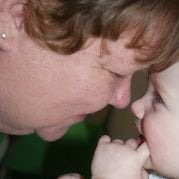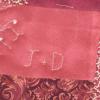Search the Community
Showing results for 'revision'.
Found 17,501 results
-


5weeks out and discouraged.
Vicki Loichinger replied to Kris Cheek's topic in Tell Your Weight Loss Surgery Story
four and a half weeks out from revision, I don't want to eat anything, I mean nothing sounds good. But I have made sure from the very beginning to drink drink drink, I have stayed hydrated thank goodness, I get all my protein in, through protein shakes or adding protein to whatever I do manage to eat. Also I have been faithful about my supplements (vitamins) I don't want my already thin hair to fall out, and I don't want to suffer the consequences of not having the vitamins I need. I figure food and eating will come eventually but I am diligent about the other three. liquids, vitamins and protein. It is not easy but it is something I practiced several months before surgery cause I knew it would be hard, but I know that it is so important. Somehow I have been able to drill that through my thick skull and do it. Now exercise, nah haven't done that yet. -


Gastric bypass versus Sleeve
Heath55 replied to Moffett84's topic in PRE-Operation Weight Loss Surgery Q&A
I actually had the sleeve in 01/13 and had restrictions but not real progress so Tuesday I'm have the bypass. I never even lost 75lbs and I was 365 and now I'm slightly over 300. My doc actually chose for me and I trusted him, which I still do and he's doing my revision Tuesday. My friend who was about my size had hers right before me and was successful as well as maintained it with the same surgeon. I have PCOS, depression, anxiety and a few other things that factor in obviously but I think I'm just one of the people it unfortunately didn't work for. I still eat so little and got absurd reflux from the sleeve but no other real complaints. Sometimes I think it's a crapshoot and genetics but your goals are a huge factor. Good luck to anyone still deciding! Sent from my iPhone using the BariatricPal App -


Banded, a learning process.
Julie norton replied to Elled2's topic in Tell Your Weight Loss Surgery Story
Congrats on keeping your band. ????And keeping weight off. It is not easy. There are some long term banders around these sites. Many have gone on to revision . I am closing in on 9 years and hope to have many more. It is a challenge to have the right restriction... Mine can change over time with no additional fills. I try to keep my fills low. But fight the weight game Hope you are well. I am much older, but same issues I would guess. Let me know -


Anyone having surgery January 2016?
Five71202 replied to dayciavu's topic in PRE-Operation Weight Loss Surgery Q&A
My revision is scheduled for Jan. 20, 2015 -
Lap Band 9/2007 by Dr Spivak in Houston: 20 lb weight loss immediately after band. Lost another 60 with running, boot camp, exercise and benefit of band as tool to eat less. Reached weight of 135 and felt great, but intermittent episodes of severe restriction, vomiting. Dr Spivak had moved out of the country and his website directed his patient to the physicians at TLC Surgery in Houston. Made an appointment with Dr Sherman Yu. Found out in July that my esophagus and pouch were dilated and i had reflux esophagitis (asymptomatic). All Fluid had to be removed from band and I returned to bad habits. Gained 50 lbs back and felt miserable. I was approved for band removal and revision to sleeve right away, but I chickened out and canceled my surgery in February thinking I could do it on my own. Wrong! i rescheduled and had my revision on 5/12/14 at Park Plaza Hospital. In the hospital, I received IV acetaminophen, dilaudid PCA and the On-Q painbuster ball. I walked 4 hrs after surgery and went home around noon the next day. The staff at PPH was amazing. Dr Yu gave me prescriptions for pain and nausea meds at my preop appt so it would be available when I got home from the hospital. He also is using new compounded lotions/creams for scar, nausea and pain which I am using as well. It is pod#4 today and feel great!! Of course, I have some incisional pain, but I really cannot complain at all. The last time I took pain meds was 2 days ago. I was sent home with the On-Q pain ball and removed it myself on pod#2. No nausea or vomiting, able to drink without problems. I drove myself to the movies yesterday and walked 2 miles today. I hope I'm not speaking too soon and jynxing myself, but I really don't think so. I just wanted to put a positive experience out there for those folks who have heard the horror stories. Best of luck to all!
-


Cue the harp music and trumpets....
DangerousD posted a topic in PRE-Operation Weight Loss Surgery Q&A
I was approved! Yeah!! I just got off the phone with my insurance company and they said I was approved. Next, is trying to get a hold of my insurance coordinator to set up a date. lol I know... good luck with that one. But I think eventually she will get back to me. I hope. In the meantime, I am both nervous and very happy! A load has been lifted off my chest. And this feels more real now. Thanks all who have listened to me...er...let's say lament, instead of the B word. You have been great and I do appreciate the support. I think this part was the hardest. (I will probably revise my thinking when going through the two weeks of liquid diet before surgery.) -


Afraid doctor will say NO to revision!
JanetBP posted a topic in Revision Weight Loss Surgery Forums (NEW!)
Hi all, my name is Janet and i am a band-failure. :-( i got banded in 2008, lost about 30 pounds total and then started regaining. I've had four fills but have never felt really restricted. I have yoyo-ed up and down the same 10 to 15 pounds for the last few years and have been at my heaviest weight ever for a while. i have an appointment for a consult set for 10/3 at the same place i was banded...they now have a new medical director and some new aftercare stuff going. they're a center of excellence in bariatric surgery so i'm not worried much about that aspect. what I AM worried about is that i'm going to be told NO. if you failed with the band why should we revise to a sleeve etc etc?? I am soooooo sick of feeling like crap. I am nearly 200 lbs overweight. my legs hurt. i don't want to do anything or go anywhere that isn't my job. i am ashamed of the way i look. i am so self concious. any tips for my consult? i just want to get this done, start losing and start living. -


Shouldn't I feel more sick?
KWeilbrenner09 replied to brennafaith's topic in POST-Operation Weight Loss Surgery Q&A
I had severe nausea the first two days after surgery. After that, none. In fact, I only take my nausea meds to help me sleep at night. I'm one week post op, so next Monday 12/9 I'll transition to puréed and see how I do! Katy W- Louisburg, NC Lapband revision to VSG with DS HW- 297 Weight at Surgery-279 CW- will update at two week appt -
Congrats on being sleeved and it sounds like you are beginning to feel pretty good. Glad your revision went well and was a success! Kelly
-
Hi all; I had my band out last wednesday. Before the band removal, my doc said that in 1-2 months after the band removal that we could do the sleeve revision. I went back in for a post-op check up today, and now he is talking 2 months! He didnt give any emperical evidence about why we need to wait 2 months, he just said that this was just a post-op visit, and that we needed to start the bariatric surgery back from the beginning about getting me qualified, etc. I brought out the big guns and told him my company was talking about layoffs(what else is new, right?, but they really ar), the time frame is may-june, and that since I know I have coverage with my current insurance, I wanted to make sure it was done before that happened. He didnt appear particularly moved with my argument. I am BUMMED. I was hoping to come away with a date today since we both went in knowing I was getting the revision and not just the band removed. Sigh.... Another trip back to him on Monday with the packet for the bariatric work up. I was hoping to finish the summer with most of my weight gone, not sure where it stands now. blech Lisa
-
I understand your thinking about having to have a major complication to have a revision. I was banded in 2007. After my pregnancy in 2010 my band never worked for me again. The upper GI didn't show any problems, I had a little bit of reflux but not much. The only indication for revision for me was that I had a large regain. I met Aetna's criteria for revision but they still denied it; they only reversed their decision when my BMI ended up back over 40. I had my revision on Saturday 12/29 and my surgeon found that the buckle on my lapband was unclasped and the band was loose on my stomach, hence the weight regain despite completely filling the band. So I guess my point is that this would be a major complication of the band since it was a mechanical failure, but no one was able to find it until they did the surgery. Obviously, I'm glad I had the revision now! Good luck to you.
-
Heres mine: HW: 285 CW: 215 Had my lapband at 265 ish....in 2009. Went down 40ish lbs. Went UP to 285 by 2017 and was that on the DAY of surgery for my revision to sleeve. Lost 70 so far post op Sent from my SM-J327P using BariatricPal mobile app
-


Looking to go from sleeve to either bypass or DS
RickM replied to Megxelizabeth91's topic in Revision Weight Loss Surgery Forums (NEW!)
For treating a regain problem, I prefer the DS as it is stronger metabolically than either the VSG or RNY - the RNY is too close to the VSG in strength to reliably offer a significant improvement in weight loss, from what I have seen over the years. Figure maybe 20lb loss on average - about what one would expect from going through all the intense dieting associated with going through surgery again. (There are some who do significantly better, bit it seems to be more a function of their determination to "make this work" or "not screw it up again" than the actual surgery itself. Call it something like a surgical placebo, lol.) By your surgeons not finding the codes for the DS implies that they are talking about the newer SIPS/SADI/"loop DS" which is a single anastomosis adaptation of the traditional BPD/DS (biliopancreatic diversion) which has been routinely covered by US insurance and Medicare for the past 14-15 years, but is a more complex procedure that relatively few bariatric surgeons perform. Some practices that do the SIPS/SADI use the BPD/DS billing codes which is technically insurance fraud, but if they're comfortable doing it, that's their concern. Revising the VSG to a DS, of either flavor, is straightforward as each use the VSG as its basis (some don't even consider it a revision, more a "completion" of the ultimate configuration.) The strong point of the BPD/DS is its regain resistance - regain is possible as it is with any of these procedures, but it is harder. I know many with the DS who are 10-20 years out (my wife included) who are still maintaining a healthy weight; some are up a bit more and working on losing their "Covid 19" - just like "normal" people but major regains are relatively uncommon. The SIPS/SADI type of DS seems to fall somewhere in between the VSG/RNY and the BPD/DS - I have seen a few in the various forums who have had it and seem to be doing well with it, but it doesn't have as long a history. Any of these procedures - the RNY, DS or SIPS - will be somewhat fussier and less care-free than your VSG when it comes to supplements and follow up; the RNY is maybe a bit less so, but one can get into some serious trouble with any of them if one slacks off. If keeping up with supplements and annual labs is not an issue with you, then any of them should be fine. -
I was wondering if any of you had your revision surgery in Tijuana, Mexico. I am considering going there since my insurance company won't cover my band removal and the gastric sleeve surgery and I cannot afford the self pay option.
-


Me before weight loss surgery
cindyw41 replied to tracey022216's topic in Gastric Sleeve Surgery Forums
I would say no, the sleeve can not be done again. You can however have a revision to the gastric bypass. The problem is finding a dr to do it. My surgeon will only do revisions because of medical reasons. (Gerd) he will not do a revision if the patient didn't follow the program. -
march 31th i had port revision surgery, my port completely flipped over and now i am home healing but i am nervous that the port will flip again when i work out has any one else felt the same way from their port revision surgery
-


Need help from band to sleeve revision folks
Lindsey replied to fern's topic in Revision Weight Loss Surgery Forums (NEW!)
I had my band removal and VSG done all in the same surgery; however, my band had been unfilled for several months prior to my surgery. I have heard several people able to have the removal and revision done in one procedure but have heard others that required some healing time after the removal. I guess it will depend on her specific condition. I was sad when I first decided to do a revision and realized my band wasn't ever going to work the way I thought it was going to...but now I couldn't be happier! I hope all goes well and she gets that band cut out! Best of luck! -


Need help from band to sleeve revision folks
Jax replied to fern's topic in Revision Weight Loss Surgery Forums (NEW!)
If there is swelling she will not be able to get the sleeve until the swelling goes down. My doctor unfilled my band 3 weeks before surgery and then took it out and revised to sleeve in one operation. I hope all goes well with your mom. -


Denver Patients
afmomofthree replied to smileybear76's topic in PRE-Operation Weight Loss Surgery Q&A
Ten more days before I have my revision from band to bypass. hopefully it goes by fast! -


Losing hope...what now?
travelinsnorkel replied to travelinsnorkel's topic in POST-Operation Weight Loss Surgery Q&A
He said that he really anchored the port on tight this time and it might just be extra scarring from that. He did do the port revision for free. I am going to see what happens this week and if he can't find it, I'm going to get a second opinion even if I have to pay out of pocket AGAIN! -
I lived in San Antonio for ever I wished that I could have had my surgery there with Dr Michael Seger. I love his office. I'm in Abilene now had my lap band done with dr Einspanier. Just before his office closed. His patients were left to find new doctors without any help. I found Dr Warnock who took over my care and did my revision. Very happy with dr Warmock.
-
I had my band to sleeve revision done on the 2nd. First thing I asked when I woke up was if it was successful since it was being done in one operation vs two. When I heard "yes", I was ecstatic. I'm happy and excited for you! I'm like on post day 7, I believe and well, it's been wonderful vs my first week with the band.That is awesome!! How's your recovery going?First day was a little rough, but after I got home that evening, it was smooth sailing. Sent from my SM-N910V using the BariatricPal App
-


September Band to Sleeve
Soon2B2LittleE replied to Soon2B2LittleE's topic in Gastric Sleeve Surgery Forums
I had my band to sleeve revision done on the 2nd. First thing I asked when I woke up was if it was successful since it was being done in one operation vs two. When I heard "yes", I was ecstatic. I'm happy and excited for you! I'm like on post day 7, I believe and well, it's been wonderful vs my first week with the band.That is awesome!! How's your recovery going?First day was a little rough, but after I got home that evening, it was smooth sailing. Sent from my SM-N910V using the BariatricPal App That's good. I hope my recovery is just as good.I hope so too. I believe it will be . Sent from my SM-N910V using the BariatricPal App Thanks!!! -
Yay. Congrats! I had my band in 2009 too. I went through something very similar. It worked and it helped so much but it was a pain to find and re-find my sweet spot, being unfilled due to being too tight, and being filled too much.. etc. I just had my revision to sleeve on Sept. 9, 2016. I love it.
-


So excited I cried...
Doc'sWife replied to FabFemale's topic in PRE-Operation Weight Loss Surgery Q&A
When I got the phone call that I was approved I was at work and I started crying in the hallway i was trying to hide in. This time when the surgeon said he would do my revision I was speechless. My husband had to answer for me lol. I have moment where I get stupid giddy. It changes your whole life and it's an amazing ride to be on. I'm so happy for you Sent from my iPhone using the BariatricPal App










